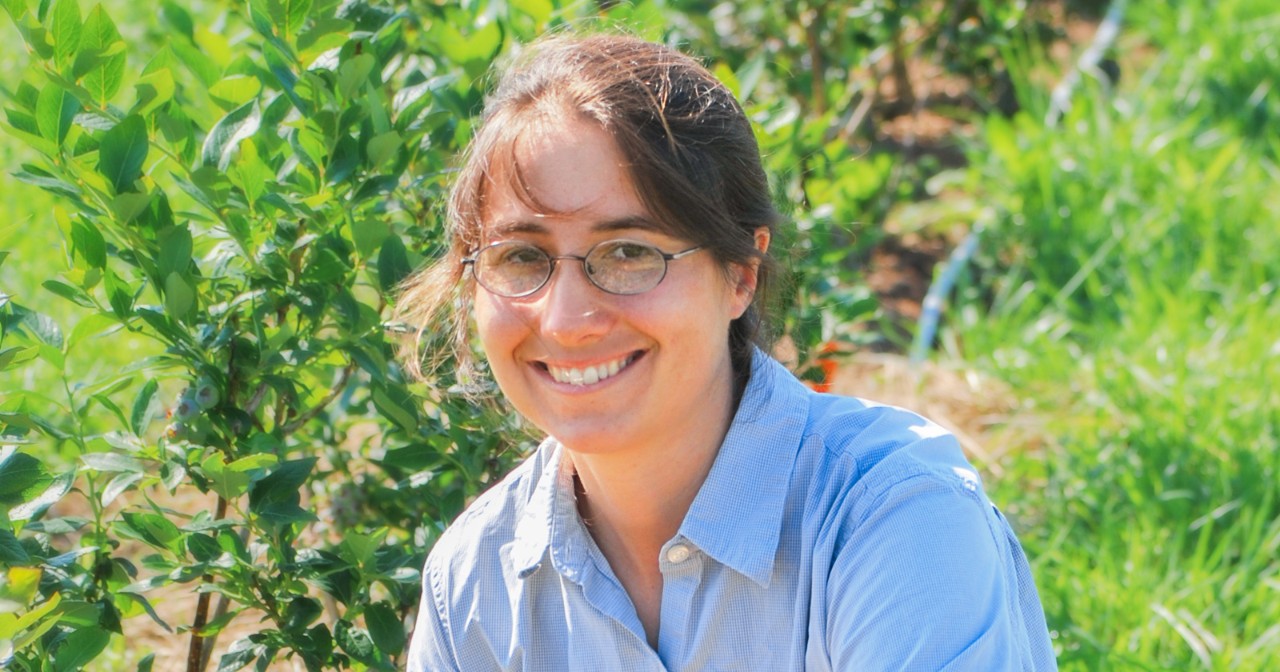


Q&A with Emmalea Ernest
February 24, 2025
Emmalea Ernest wants you to eat more veggies. Or, at least, more kinds of veggies. As an assistant professor in the Department of Plant and Soil Sciences and the Cooperative Extension fruit and vegetable specialist, she’s working to bring crops to Delaware that aren’t typically grown in First State soil. Below, she spills the (fava) beans on her work.
Why does this matter?
Farmers need options because it’s good for risk management. Grow just one crop—or only a handful of crops—and you are more susceptible to pest or disease issues, weather-related issues or market-related issues. For consumers, this work means a wider variety of locally grown options.
What are some vegetables that have come—or may come—to market because of this work?
One USDA-funded project I’m involved with—in collaboration with Virginia Tech, Virginia State and the University of Maryland—is focused on fava beans, identifying which lines are suitable for production in the Mid-Atlantic region. In a Georgetown field, I’ve screened 500 different fava bean lines from around the world to see if they will grow in Delaware. I’m particularly interested in larger types that people from Latin America, Asia and the Middle East are accustomed to eating but can’t find here. Something unique is that we are looking at an overwintering production system, a niche timeframe when many fields in Delaware are underutilized.
Does your work involve engineering vegetables so they are capable of growing here, or is this about finding what in its current state can thrive?
I have one breeding program focused on developing new varieties—more resistant to pests and climate change—and that is for lima beans.
What’s the timeline for introducing a new crop to market? If we find something good among the lines we test, it can happen pretty quickly. If breeding needs to be done, it can be closer to 10 years.
What drew you to this work?
I have been at UD for 20 years. I came to work on beans, and I stayed because I enjoy interacting with Delaware growers.
What sets First State growers apart?
They are interested in trying new things. If you’re doing research and are trying to encourage people to try something different, it’s encouraging to have people who are willing.
Do you have a bucket list fruit or vegetable you dream about bringing to Delaware?
When I was working on my master’s in Ecuador, I spent time in Peru and became familiar with subtropical, fun and interesting crops that would be marginal here. Climate change would allow us to grow some, but I can’t say I’m hoping for that. A warmer climate presents new opportunities, but it also makes it very hard to grow existing crops.
Are Delaware growers seeing the effects of climate change? Yes, temperature changes are already impacting the quality and yield of certain vegetable crops.
Your research purview includes crops already growing in Delaware. What does this work look like?
I’ve done a lot on watermelons, a very important crop to the state. Right now, I’m looking at biofumigation, a practice that uses a particular cover crop incorporated into the soil to deal with some pretty intractable pest and disease problems. I’ve also worked to identify practices that help growers cope with rising temperatures, like lighter-colored mulch and shade cloths to protect from the sun.
We hear a lot about agricultural challenges, from rising costs to a changing climate. What’s giving you hope?
The necessity of food. At UD, people are interested in engaging in more applied research and I think that’s great. They want to do impactful work, and this is just one opportunity.
Contact Us
Have a UDaily story idea?
Contact us at ocm@udel.edu
Members of the press
Contact us at 302-831-NEWS or visit the Media Relations website


